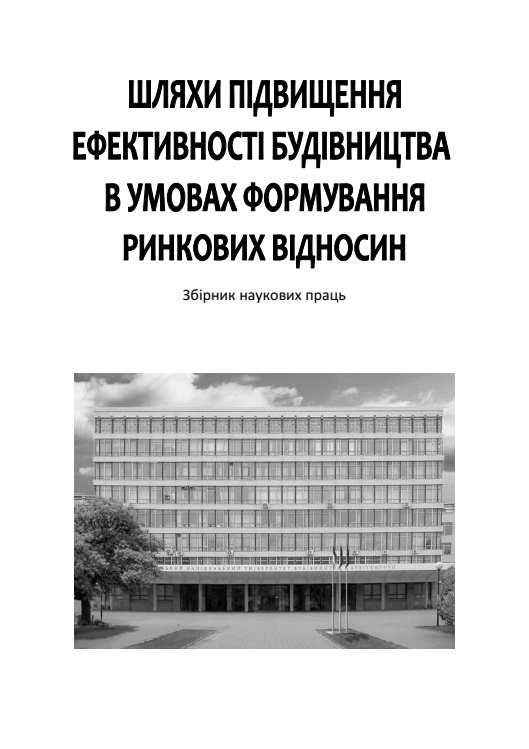Theoretical basis of formation of economic immunity of construction companies
DOI:
https://doi.org/10.32347/2707-501x.2018.38.276-282Keywords:
economic security, economic immunity, monitoring, threats, mechanism, construction company.Abstract
The article deals with the features of the formation of economic immunity of construction enterprises. It is proposed to improve the mechanisms of preventive protection and ensure the safety of enterprises from loss of viability and subsequent self-liquidation or bankruptcy a system that allows you to effectively identify existing risks and threats from the micro-, meso and macroenvironment and promptly respond to them by means of prevention using "economic immunity". A new definition of "economic immunity" of an enterprise has been proposed, which includes subsystems for monitoring, early recognition of internal and external threats, assessment of the degree of danger (risks), neutralization, evasion or neutralization and the formation of a "memory" of the threat through a system of indicators. The main direct and indirect signs of deterioration of the economic immunity of the enterprise are revealed.
References
Дубінін Д.В. Методика удосконалення організаційної структури управління будівельного підприємства шляхом формування системи інформаційного забезпечення // Шляхи підвищення ефективності будівництва в умовах формування ринкових відносин. 2014. вип. 32. С. 250–254.
Зельцер Р.Я., Бєлєнкова О.Ю., Дубінін Д.В. Інноваційні моделі і методи організації, управління і економічної оцінки технологічних процесів будівельного виробництва: монографія / Р.Я. Зельцер, О.Ю. Бєлєнкова, Д.В. Дубінін. Київ: «МП Леся», 2018. 208 с.
Бєлєнкова О.Ю. Новітні інформаційні продукти як засіб удосконалення навчального процесу / О.С. Гриценко, Ю.О.Гриценко, О.Ю. Бєлєнкова,Т.Ю. Цифра // Шляхи підвищення ефективності будівництва в умовах формування ринкових відносин: зб. наукових праць. – вип.23. – 2011. – С.9 -13.
Стеценко С.П. Облікові системи різного рівня як основа забезпечення економічної безпеки / С.П. Стеценко // Інвестиції : практика та досвід. – 2013. – №22. – С. 105-107.
Стеценко С.П. Загальні імперативи формування мезорівня економічної безпеки/ С.П. Стеценко // Будівельне виробництво, 2017. – 63/2. – С.47-51.
Федосова О. В., Молодід О. О. Технологічний принцип визначення економічної безпеки будівельного підприємства // Економічний простір. 2012. №64. С. 273-280.
Молодід О.О. Системний підхід при економіко-математичному моделюванні економічної безпеки будівельного підприємства [Електроний ресурс] / О.О. Молодід // Ефективна економіка. 2012. № 9. Режим доступу: http://www.economy.nayka.com.ua/?op=1&z=1373
Мігус І.П., Андрієнко В.М. Структура та основні елементи системи забезпечення економічної безпеки при управлінні безпекою праці на будівельних підприємствах // Бізнес-Інформ. 2014. № 10. С. 213-219.
Фісуненко П.А., Лаже М.В. Особливості забезпечення економічної безпеки будівельних підприємств // Шляхи підвищення ефективності будівництва в умовах формування ринкових відносин. К.: КНУБА, 2015. Вип. 33. С. 156-164.
Пушкар Т.А. Особливості економічної безпеки підприємств будівельної галузі / Т.А. Пушкар, К.С. Дяченко // Проблеми і перспективи розвитку підприємництва. – 2013. – № 2. – С. 134–139.
Черевко О.В., Дмитренко В.І. Особливості функціонування системи економічної безпеки будівельних підприємств. Інвестиції: практика та досвід. 2015. № 12. С. 49–51.
Бланк И.А. Финансовый менеджмент: учебный курс [Текст] / И.А. Бланк. – 2-е изд., пре раб. и доп. – К. : Эльга, Ника-Центр, 2004. – 656 с.
Bielienkova О.Yu. & Antropov Yu.V. (2013) The prediction model of economic stability (based on small construction enterprises of Ukraine) European Applied Sciences, November-December, 2013, 8 – Stuttgart, Germany – pp. 161-163.
Downloads
How to Cite
Issue
Section
License
Copyright (c) 2020 T. Tsyfra, N. Bolila, O. Molodid

This work is licensed under a Creative Commons Attribution 4.0 International License.
Authors who publish with this journal agree to the following terms:
- Authors retain copyright and grant the journal right of first publication with the work simultaneously licensed under a Creative Commons Attribution License that allows others to share the work with an acknowledgement of the work's authorship and initial publication in this journal.
- Authors are able to enter into separate, additional contractual arrangements for the non-exclusive distribution of the journal's published version of the work (e.g., post it to an institutional repository or publish it in a book), with an acknowledgement of its initial publication in this journal.
- Authors are permitted and encouraged to post their work online (e.g., in institutional repositories or on their website) prior to and during the submission process, as it can lead to productive exchanges, as well as earlier and greater citation of published work (See The Effect of Open Access).

